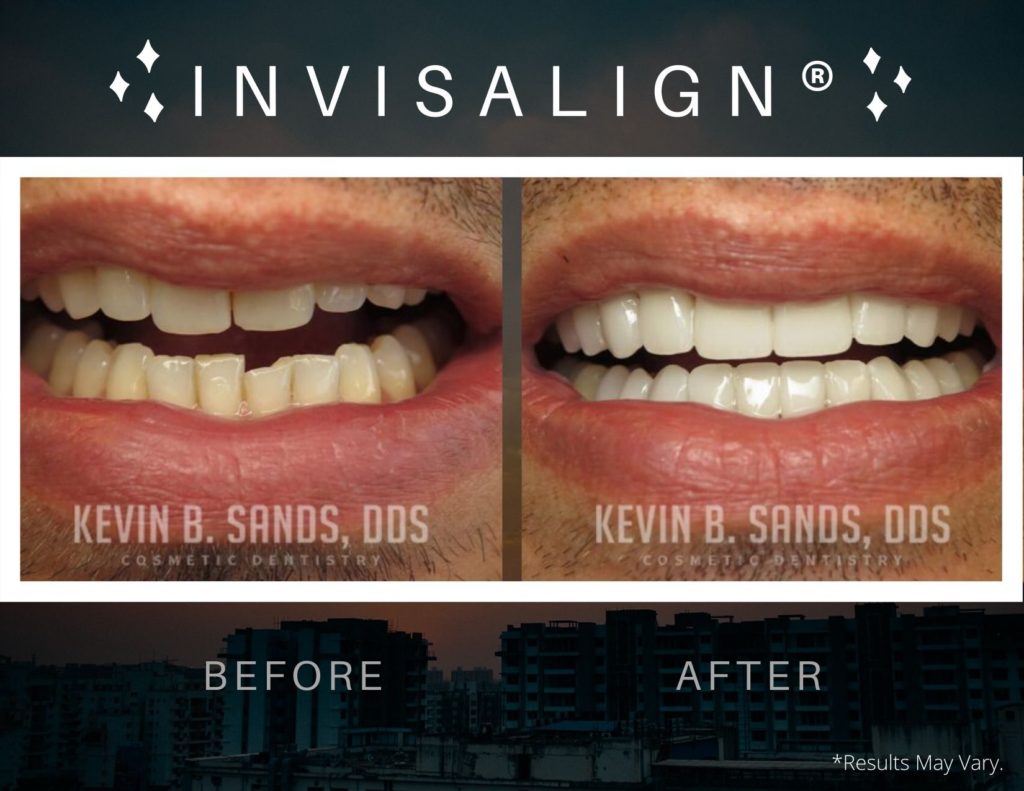The Ancient Egyptians were among the first to experiment and use metal braces to try to straighten crooked teeth. The Greeks, Etruscans, and Romans soon followed.
The method has since evolved into what we know as traditional orthodontics.
For decades, metal braces have been the top standard in teeth realignment. They’ve helped thousands of people achieve a better smile.
Then Invisalign® came along. It’s now one of the most popular ways to straighten crooked teeth.
For anyone who needs braces but hesitates at a mouth full of metal, Invisalign® brings forth a new frontier—with results that are just as dramatic.
Invisalign®: A Modern Shift in Teeth Alignment
 There weren’t too many options to correct crooked teeth before the late 1990s when Invisalign® first began.
There weren’t too many options to correct crooked teeth before the late 1990s when Invisalign® first began.
Dental braces have continuously improved since first appearing on ancient Egyptian mummies. They’re now much more convenient, faster, and a tried-and-true way to straighten teeth.
But braces can be cumbersome, irritating inside the mouth and lips. They’re also incredibly visible, which can cause people to feel self-conscious.
Enter Invisalign®—developed exclusively to find an alternative to traditional braces.
Using cutting-edge computer technology, Invisalign® changed the game to provide realignment that’s arguably just as effective
Traditional Braces or Invisalign®? How They Compare
There are several reasons patients might choose to use Invisalign® over traditional braces, such as:
- A better appearance: Invisalign® is virtually invisible, as compared to traditional braces, which are immediately noticeable.
- Easier maintenance: Braces can often make basic dental hygiene, like flossing, more difficult. Invisalign® allows for easier cleaning.
- Ease of use: Invisalign® are often much more comfortable to wear over long periods of time than metal braces.
- No need to avoid foods: Certain foods tend to stick to braces easily, which can be cumbersome during everyday life.
Invisalign® vs. Braces: Treatment Times
Treatment times vary depending on patient needs, but Invisalign® can often be a faster realignment treatment than braces.
Traditional braces can often be a long process that involves customized fits and adjustments as teeth are moved into their proper position.
Traditional braces are typically started at a young age for the best effectiveness, but some adults also benefit from braces.
Invisalign® treatments, on the other hand, take approximately a year from start to finish.
Invisalign® vs. Braces: Effectiveness
Invisalign® aligners are used 20 to 22 hours a day, only taken off during mealtimes or at night.
Every few weeks, you will get a new set of aligners as teeth begin to shift to their new position.
This design makes Invisalign® just as effective—and much more convenient—as traditional braces in pulling teeth into their proper position
Invisalign® vs. Braces: Costs
Teeth realignment can be among some of the expensive dental care patients receive. Insurance often helps, but because of the long process involved, braces can get costly.
Invisalign® can sometimes be a more cost-effective solution as treatments are often faster than traditional braces. Insurance may also pay for some of the costs associated.
Want to learn more?
Call us at our Beverly Hills office at 310-273-0111 or contact us online to schedule a consultation with Dr. Sands soon.
